Search
PATENT PORTFOLIO
Electrical and Electronics
NASA's portfolio of electrical and electronics technologies represents a vast array of innovative solutions for a wide range of applications. Whether you are looking for solutions to power a spacecraft, improve the efficiency of an electric vehicle, or enhance the performance of a consumer product, NASA's portfolio of electrical and electronics technologies has something to offer.
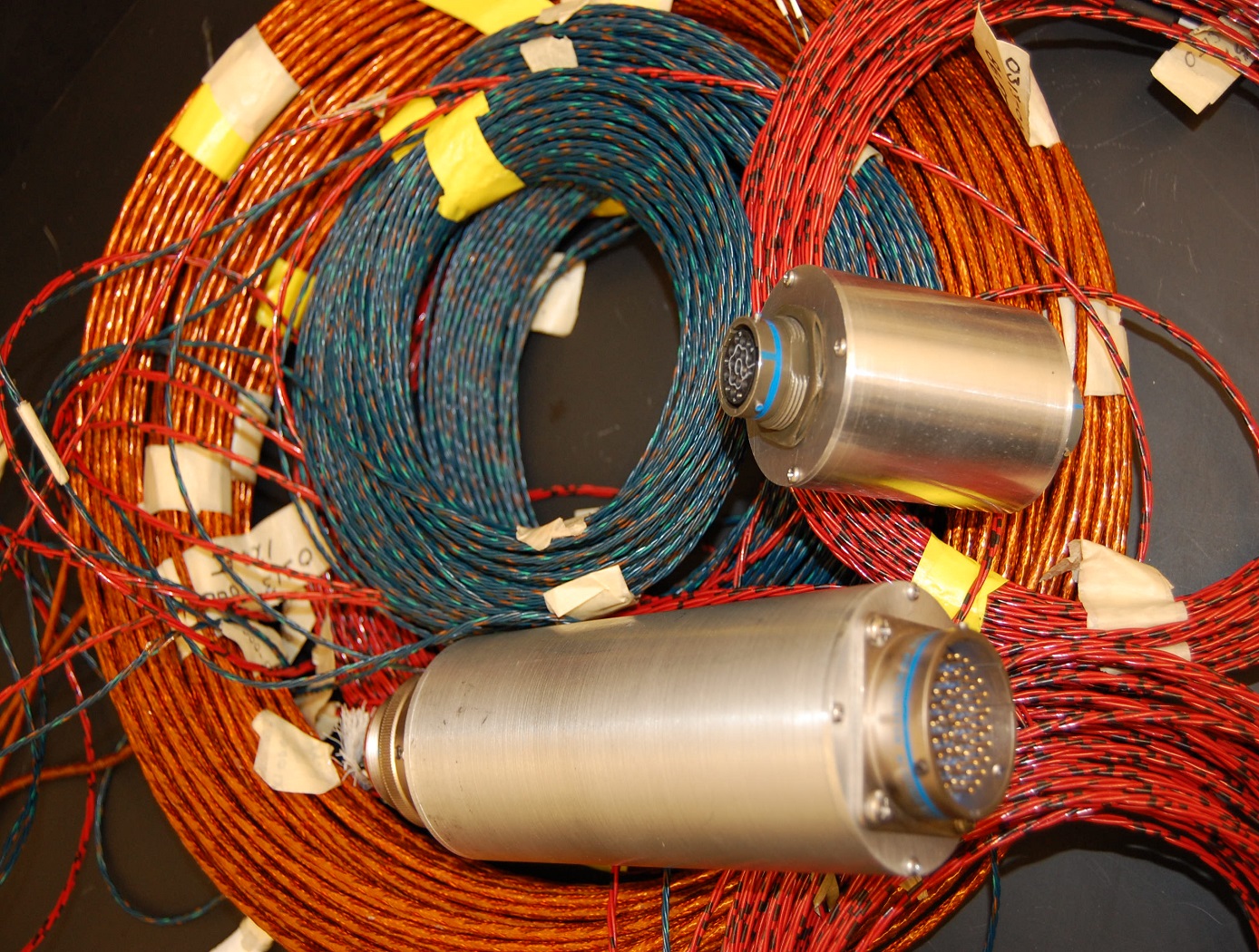
Self-Healing Wire Insulation
Insulation is necessary on electrical wires in order to protect electrical systems from shorting. In high voltage systems such shorting can lead to sparking and fires. Many lives have been lost due to electrical wire insulation failure. Many man hours are also expended in the repair and inspection of electrical wiring in order to attempt to prevent wire failure. Wire insulation with a built in "self-healing" capability would greatly improve the safety of systems containing electrical wiring. Such insulation would require far less inspection and repair time over the lifetime of the system.
Polyimides such as Kapton are an integral part of high performance electrical wire insulation. Traditional polyimides are very inert to solvents and do not melt. A new set of polyimides, developed for use as films for the manual repair of high performance electrical wire insulation, have a low melting point and can be dissolved in special solvents. These properties can be taken advantage of in self-healing polyimide films. Microcapsules containing a solvent soluble polyimide are prepared using industry standard inter-facial or in situ polymerization techniques. These capsules are then incorporated into a low melt polyimide film for use as either a primary electrical wire insulation or as one of several layers of a composite wire insulation. The low melt polyimide film substrate in which the microcapsules are incorporated has good solubility with the solvent used to dissolve the polyimide which makes up the fluid inside the microcapsule. Such a capsule filled insulation, when cut or otherwise damaged, will result in the release of the capsule contents into the cut or damage area. The solvent then dissolves a small amount of the surrounding polyimide insulation but will also begin the process of evaporation. The combination of these two processes allows for excellent intermingling of the healant and the surrounding substrate, resulting in a repair with superior bonding and physical properties.
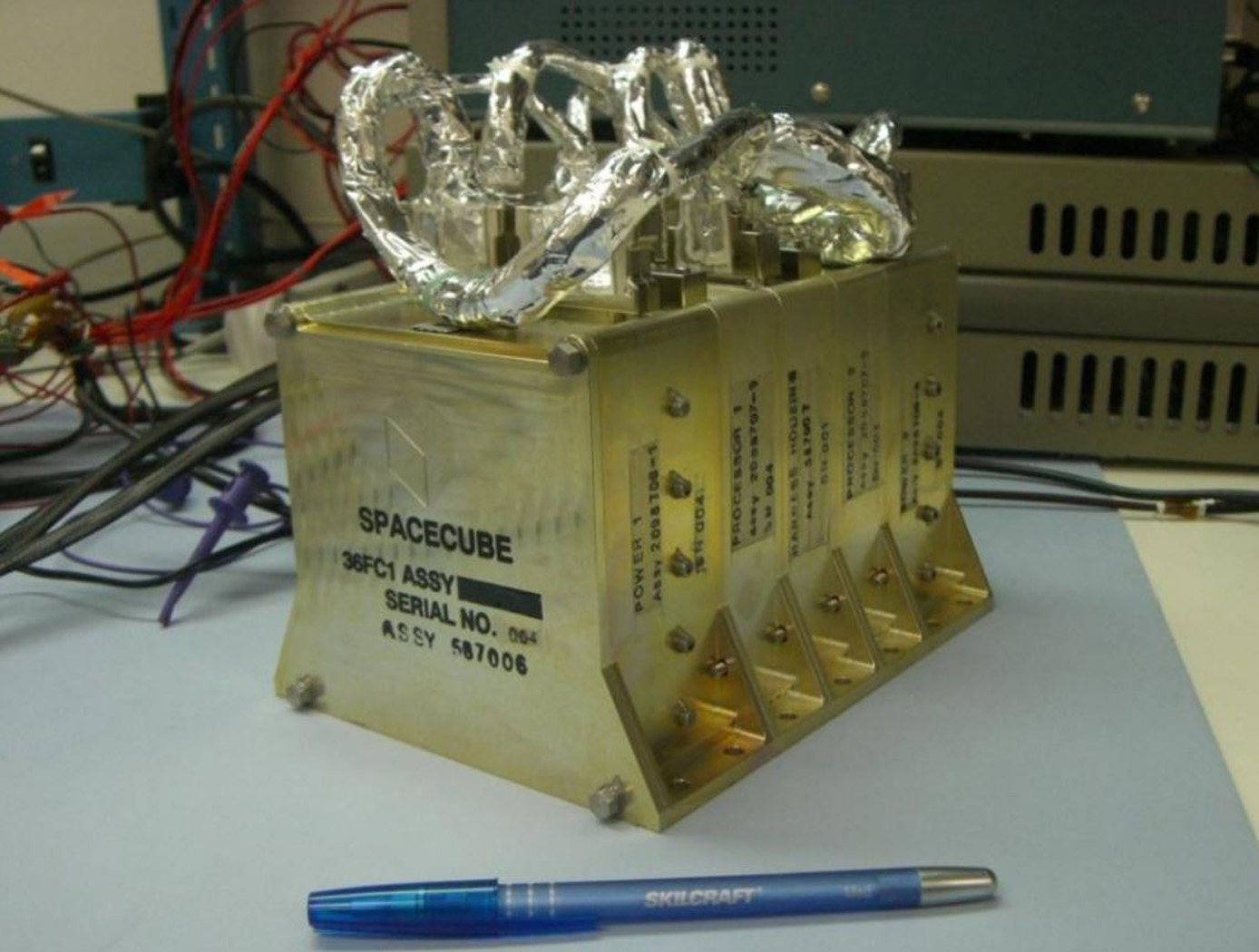
SpaceCube
Next generation instruments are capable of producing data at rates of 108 to 1011 bits per second, and both their instrument designs and mission operations concepts are severely constrained by data rate/volume. SpaceCube is an enabling technology for these next generation missions.
SpaceCube has demonstrated enabling capabilities in Earth Science, Planetary, Satellite Servicing, Astrophysics and Heliophysics prototype applications such as on-board product generation, intelligent data volume reduction, autonomous docking/landing, direct broadcast products, and data driven processing with the ability to autonomously detect and react to events. SpaceCube systems are currently being developed and proposed for platforms from small CubeSats to larger scale experiments on the ISS and standalone free-flyer missions, and are an ideal fit for cost constrained next generation applications due to the tremendous flexibility (both functional and interface compatibility) provided by the SpaceCube system.

Gated Chopper Integrator (GCI)
The gated chopper integrators function is to amplify low level signals without introducing excessive offset and noise and to do this with accurate and variable gain. The unique feature of the technology is the inherent demodulation present in the integrator which eliminates the need for filtering and allows the user to accurately vary the gain in finely graduated steps. The reduction of the offset of the amplifier is very efficient and lends itself to radiation hardened by design implementations. Since total dose can change the offset due to varying threshold voltages of CMOS transistors, the circuit adapts and compensates for any variations. The autozero integrator also adapts to its own varying offsets. The net outcome is variable, accurate gain that is very robust to supply variations, radiation effects and aging.
The technology was developed as a multi-channel thermopile signal processor. Lab measurements indicate very accurate amplification with low offset and noise.

Using the Power Grid for Geophysical Imaging
This technology utilizes the U.S. high-voltage power transmission grid system as an extremely large antenna to extract unprecedented spatiotemporal space physical and geological information from distributed GIC observations. GICs are measured using differential a magnetometer technique involving one fluxgate magnetometer under the transmission line and another reference magnetometer station nearby. The reference station allows subtraction of the natural field from the line measurement, leaving only the GIC-related Biot-Savart field. This allows inversion of the GIC amplitude. The magnetometer stations are designed to operate autonomously. They are low-cost, enabling large scale application with a large number of measurement locations.
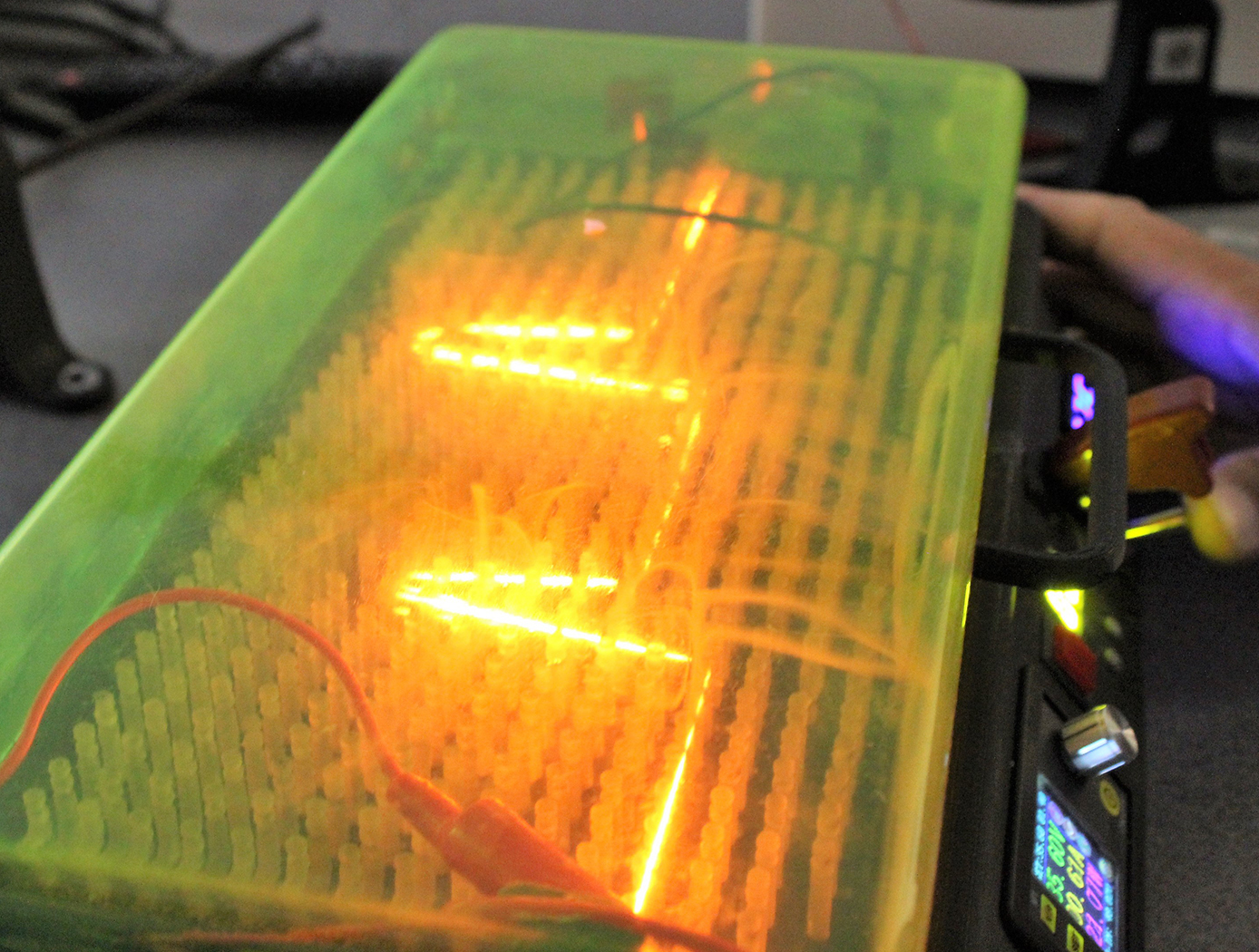
Shape Memory Alloy Art (SMArt)
A prototype device has been developed at Glenn for creating shapes from SMA wire. The apparatus uses material feedstock in spools made of alloys that exhibit the shape memory effect (temperature-induced activation), super elasticity (stress-induced activation), and to some extent, magnetism (magnetically-induced activation). The feedstock (e.g., wire spool) is routed and positioned around a series of modular pins to create a shape outline. Once the desired shape is formed, the wire ends are clipped from the feedstock and secured into a locking mechanism, then connected to a heating circuit (e.g., joule heating, hot plate, heat gun). The programmable prescribed circuit parameters, including current or temperature and training time, are set and confirmed using the apparatus control dials and indicators to ensure safe and accurate operation of the device. Before enabling the circuit, a plastic shield is placed over the modular array to protect the operator. The final product will be a desired shape that can be deformed and recovered numerous times through heat activation.

Serial Arrayed Waveguide Grating
Serial Arrayed Waveguide Grating enables higher resolution wavelength separation. Traditional AWGs split the optical signal into multiple parallel paths each with a different path length. This new approach creates the different path lengths by splitting the signal into essentially one long path in which the different channels are periodically split off the main path in the desired fraction. This has the net result of requiring much less space on-chip for comparable optical path differences.
In traditional AWG, there are multiple parallel optical paths, each with a different engineered path-length. For high resolution, you want many different parallel paths and large differences in path length between the paths. To design this on a photonics chip requires significant area. The serial AWG creates a single path, equivalent to the longest path in the parallel AWG and split off fractions of the optical signal at various points along the way to create the equivalent path lengths. Serial Arrayed Waveguide Grating re-uses the same path instead of needing independent parallel paths.
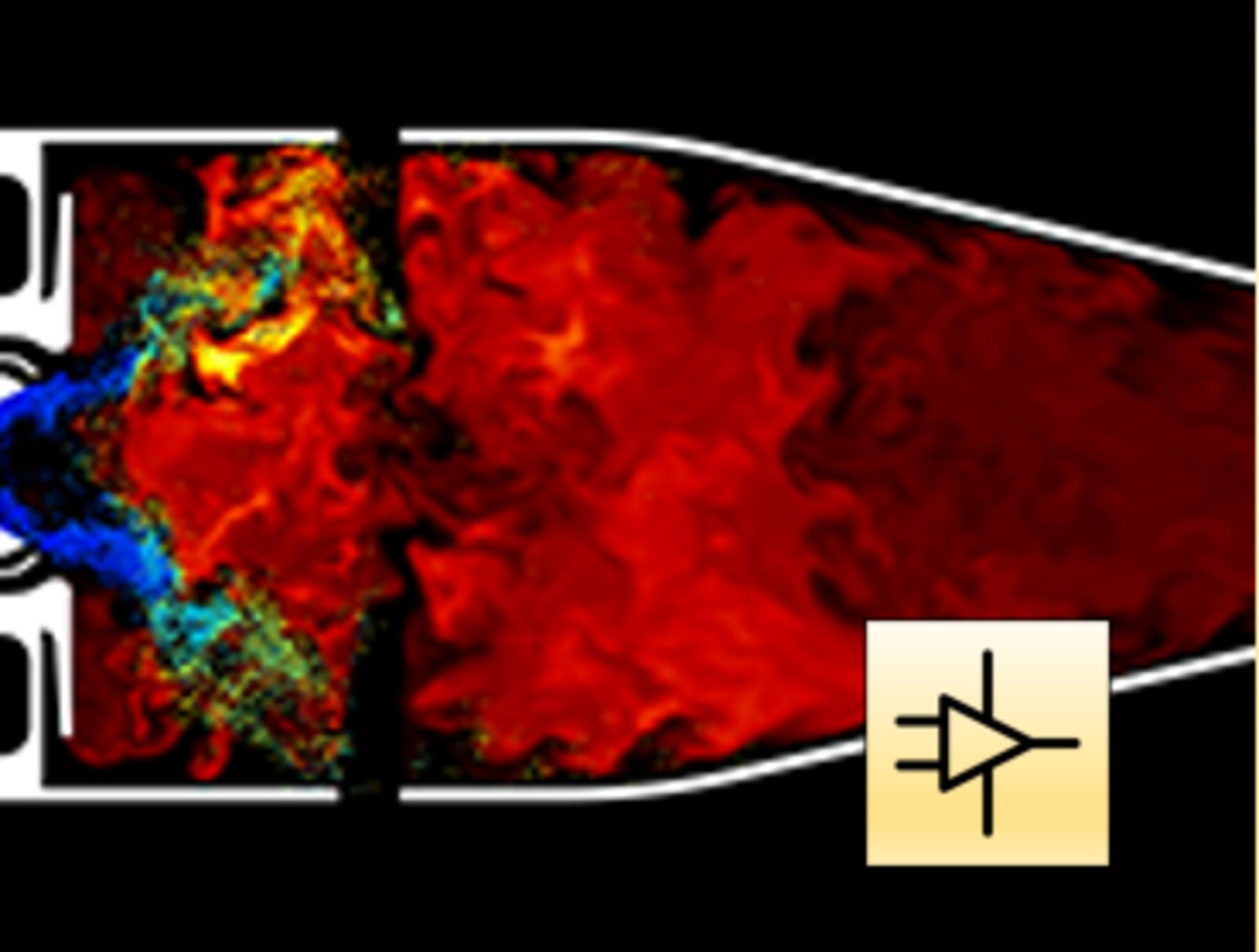
Robust High Temperature SiC Op Amps Practical Fabrication
The technology is part of a new generation of NASA Glenn SiC integrated circuits with unprecedented durability in the field of high-temperature electronics. For robust operational amplifiers based on SiC Junction Field Effect Transistors (JFETs), this novel compensation method mitigates issues with threshold voltage variations that are an effect of die location on the wafer. Modern high-temperature op amps on the market fall short due to temperature limits (only 225C for silicon-based devices). Previously, researchers noted that multiple op amps on a single SiC wafer had different amplification properties due to different threshold voltages that varied spatially as much as 18% depending on the circuit's distance from the SiC wafer center. While 18% is okay for some applications, other important system applications demand better precision. By applying this technology to the amplifier circuit design process, the op amp will provide the same signal gain no matter its position on the wafer. The compensation approach enables practical signal conditioning that works from 25C up to 500C.

Smooth-Walled Feed Horn
The technology is a monotonically-profiled, smooth-walled scalar feed horn optimized between 33 and 45 GHz. The phase center for this horn is near the aperture and is stable in frequency. The feed horns monotonic profile is compatible with machining by progressive plunge milling in which successively more accurate tools are used to realize the feed profile. This technique has been used for individual feeds and is potentially useful for fabricating large arrays of feed horns, such as multimode Winston concentrators, direct-machined smooth-walled conical feed horns, and for dual-mode feed horns.
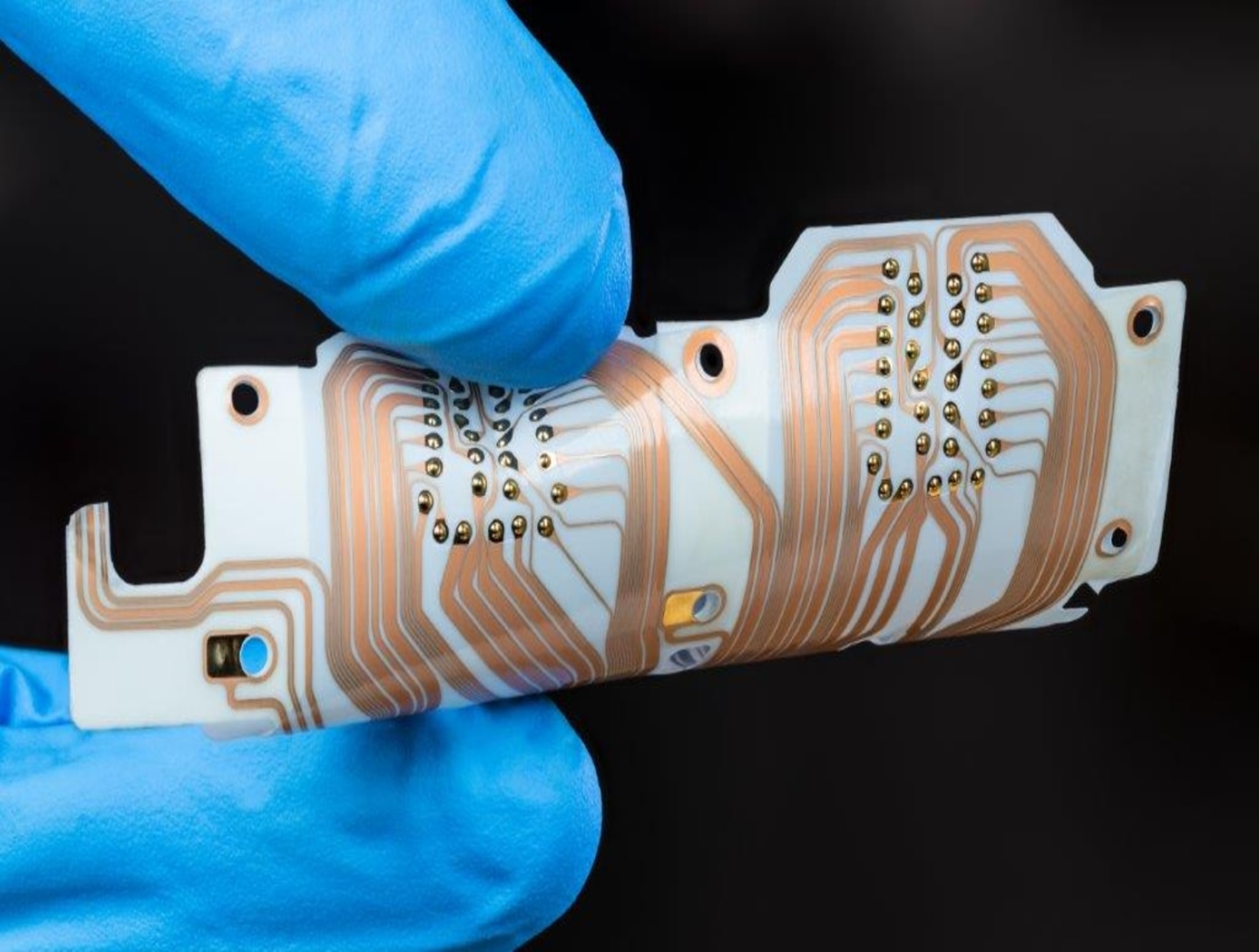
Printable IoT sensor development platform
Advances in additive manufacturing have enabled development of printable electronic sensor elements that can be deposited onto flexible substrates. To benchmark performance of printed sensors against the state of the art, NASA developed a low power flexible sensor platform. The platform integrates the following key components and features:
-Flexible substrate: DuPont Kapton allows bending around cylindrical surfaces as small as in diameter.
-Embedded microcontroller: Cypress CY8C4248 LQI-BL583 Arm Cortex M0 processor with BLE wireless controller, max frequency 48 MHz. Supports low power modes of operation, capacitive sensing support, and a single-channel 12-bit AD converter.
-Commercial sensor suite: Bosch BNO080 inertial sensor; Bosch BME280 humidity, pressure, and temperature sensor; AMS CCS811 air quality sensor (VOCs and CO2).
-Prototyping area for custom-printed sensors: 1) thermistor, uses carbon-based PTC resistor paste DuPont2792; 2) capacitive humidity sensor using a NASA-developed dielectric ink.
NASA researchers have used the platform to study performance of the printed capacitive humidity sensor. The 2x4 mm co-doped barium titanate sensing element is highly sensitive to water vapor and performs as an unobtrusive breathing monitor, sensitive to breath at distances of up to 20 cm. Average change of sensor capacitance at a distance of 7.5 cm was observed to be 6.23.5 pF.
View more patents



